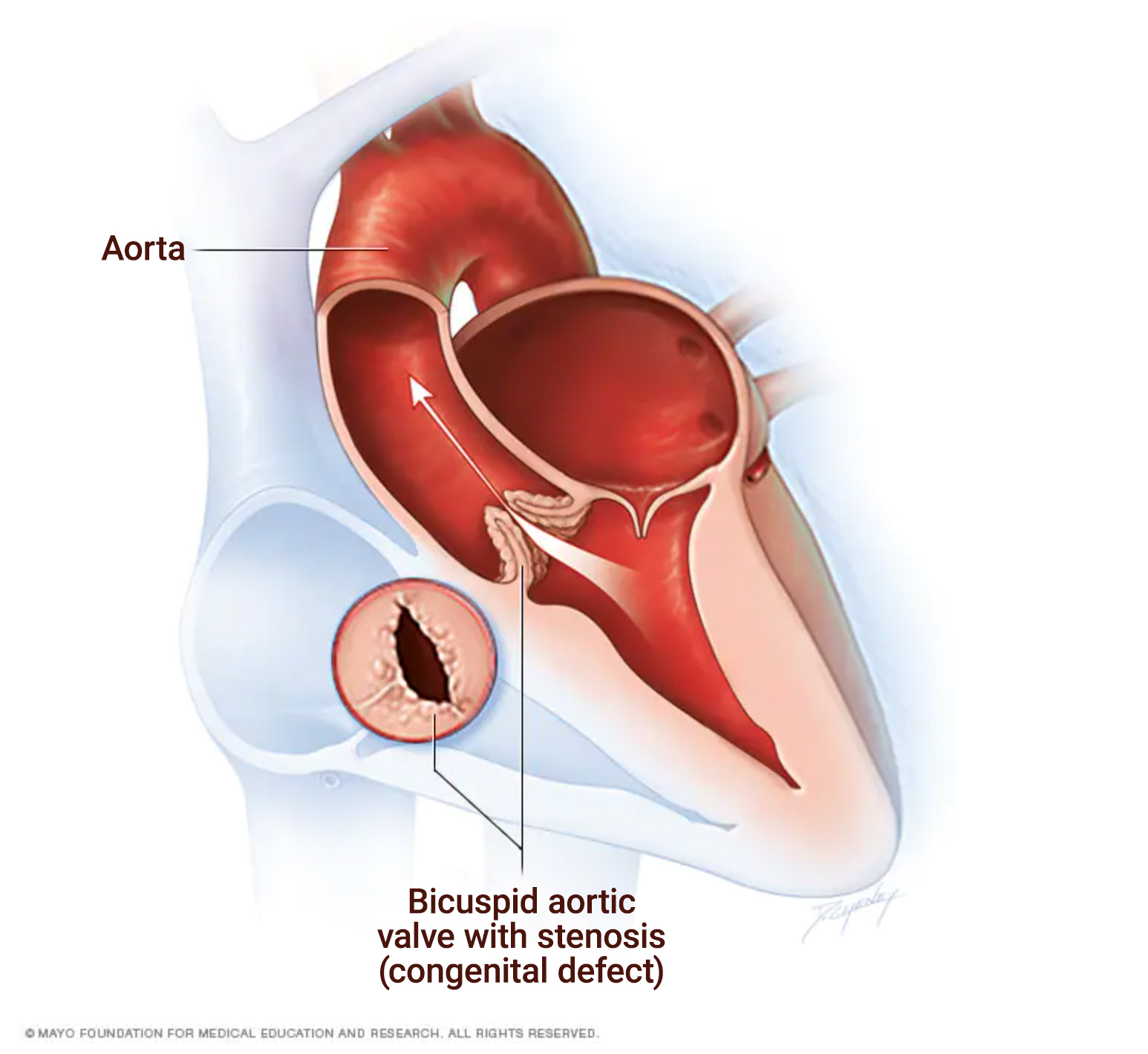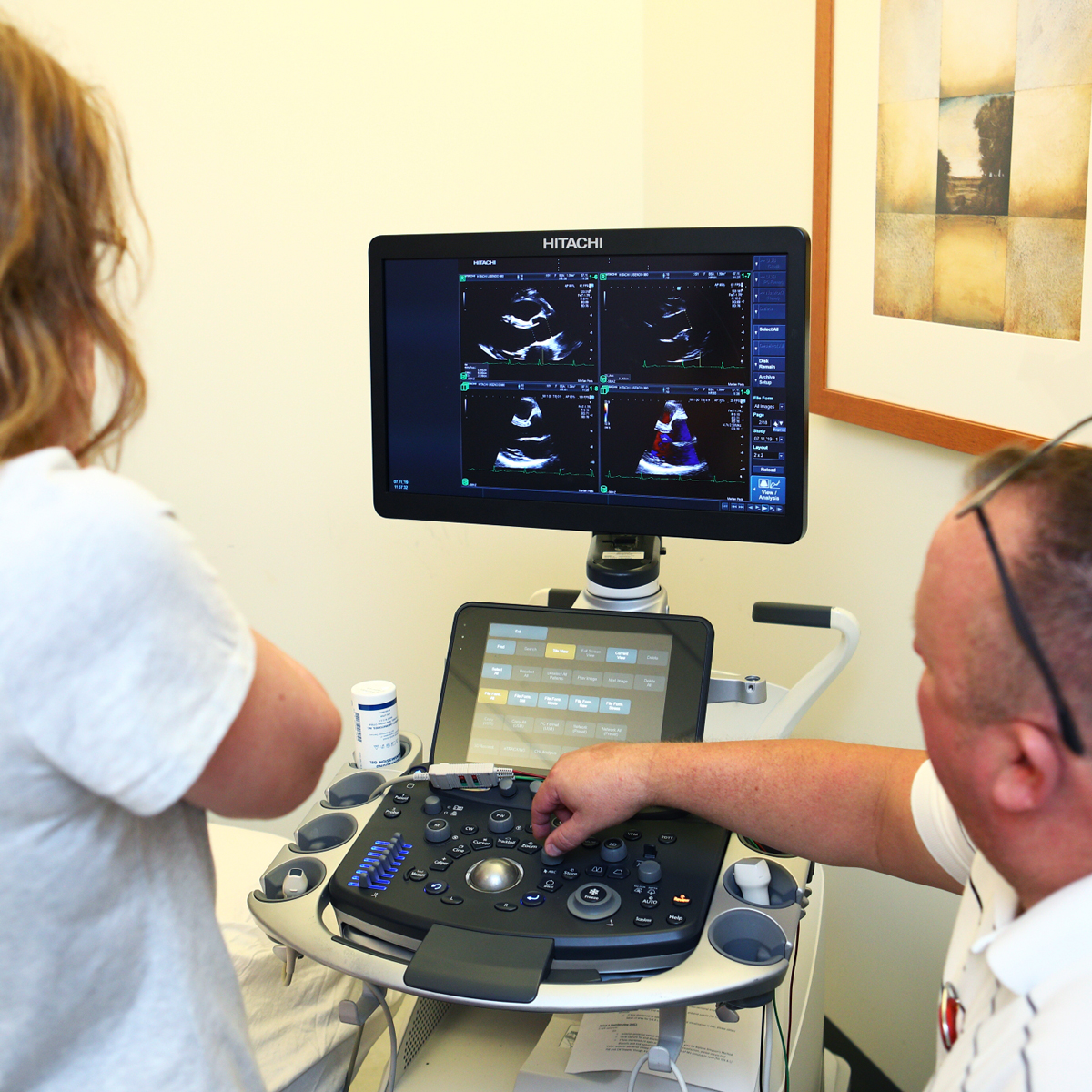What is Bicuspid Aortic Valve (BAV)?
The aorta is the major blood vessel that carries blood from the heart to the rest of the body. The aortic valve allows oxygen-rich blood to flow from the heart to the aorta (the major blood vessel that carries blood from the heart), and prevents blood from leaking back into the heart (aortic regurgitation).
Normally, the aortic valve has three flaps controlling this blood flow. In a person with bicuspid aortic valve, there are only two flaps.
What are the Key Features of Bicuspid Aortic Valve?
A bicuspid valve with only two flaps, may not be able to completely stop blood from leaking back into the heart. In addition, the valve may become stiff (aortic stenosis), making the heart pump harder and the aorta may also become enlarged. People with bicuspid aortic valve may have abnormal coronary arteries (blood vessels that branch off from the aorta near the heart), an aortic aneurysm, an abnormal thoracic aorta (the portion of the aorta that passes through the upper chest), and unstable high blood pressure.
It is important to be evaluated if members of your family have bicuspid aortic valve because it is highly heritable.
To learn more about bicuspid aortic valve and its diagnosis and treatment:
You may also contact our Help and Resource Center with questions anytime at marfan.org/ask.
-
Cardiovascular
- Aortic valve with two flaps
- Enlarged heart
- Heart murmur
- Weak pulse in the wrists and ankles
- Aortic stenosis
- Aortic regurgitation

What Causes Bicuspid Aortic Valve?
Bicuspid aortic valve is a defect in the heart’s aortic valve that is present at birth (congenital). The exact cause of bicuspid aortic valve is not known, but some medical experts suggest it may be caused by a connective tissue condition similar to that which causes the heart and blood vessel problems in Marfan syndrome. However, the genes that may cause this condition are currently unknown.
Image credit: Mayo Clinic

How is Bicuspid Aortic Valve Diagnosed?
Bicuspid aortic valve can be diagnosed through medical testing, most often with an echocardiogram. Often it is not diagnosed in children because the bicuspid aortic valve can work properly for many years before any symptoms occur. It is possible that bicuspid aortic valve can be diagnosed in children with more severe cases.
A medical professional may perform a magnetic resonance imaging test (MRI) of the heart or an ultrasound of the heart (echocardiogram) to detect a bicuspid aortic valve. A transesophageal echocardiogram may also diagnose a bicuspid aortic valve.
How is Bicuspid Aortic Valve Managed?
Complications of bicuspid aortic valve include aortic aneurysm (bulge) and dissection (tear), which can be life-threatening, making it important for the condition to be diagnosed early and accurately. People who have been diagnosed with bicuspid aortic valve should be under the ongoing care of a heart valve disease specialist who can monitor changes in the heart, valves, and aorta over time. These changes may require surgery to replace the bicuspid valve and aortic aneurysm.
Important Resources Related to Bicuspid Aortic Valve
Emergency Preparedness
Following your doctor’s recommendations for medication, monitoring, and physical activity gives you the best chance of avoiding a serious complication of a genetic aortic condition. Still, there are no guarantees. That’s why it’s important for you to learn about the medical problems that could arise and require immediate medical treatment.
To help prepare you for these situations, we recommend that you complete our Emergency Preparedness Kit, which we created specifically for people with Marfan syndrome and related genetic aortic conditions. It includes our Emergency Alert Card which you can download and carry in your wallet. You can click below to download them.

